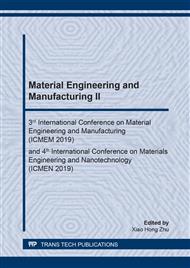p.121
p.133
p.139
p.145
p.151
p.156
p.165
p.173
p.180
Durability Test on the Bond Strength between SFRP Layer and Masonry Surface
Abstract:
The mechanical properties of masonry structural members strengthened by FRP (Fiber Reinforced Polymer) are affected by the bond strength of the reinforcement interface, in addition to the strength of the material FRP itself. This project is aimed at the new technology of Sprayed Fiber Reinforced Polymer Composites (SFRP), which is currently attracting attention. The bond strength between SFRP layer and masonry surface under high-humidity condition during strengthening construction and dry-wet cycle conditions after reinforcement were studied by experimental method. Different masonry substrates and different reinforcement methods were set as the test parameters. It is concluded that, compared with the currently used GFRP (Glass Fiber Reinforced Polymer) sheets reinforcement method, the SFRP reinforcement method has an significant improvement in the bond strength and the durability.
Info:
Periodical:
Pages:
165-172
Citation:
Online since:
January 2020
Authors:
Price:
Сopyright:
© 2020 Trans Tech Publications Ltd. All Rights Reserved
Share:
Citation:


